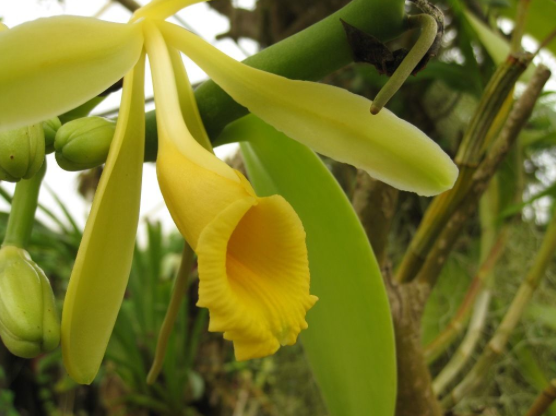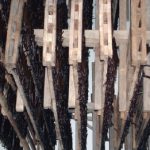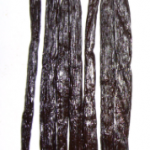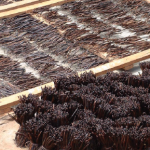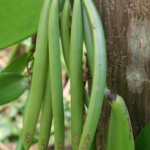+ Spanish
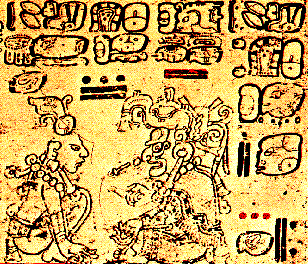 It’s remarkable to learn how indigenous Totonacas (Mexico) during the prehispanic period learned how to and reproduce the vanilla orchid manually by imitating the pollinator insects. This activity was a ritual and the task was given to young and virgin women who carried out the pollination during the flowering period of the orchids.
It’s remarkable to learn how indigenous Totonacas (Mexico) during the prehispanic period learned how to and reproduce the vanilla orchid manually by imitating the pollinator insects. This activity was a ritual and the task was given to young and virgin women who carried out the pollination during the flowering period of the orchids.
In fact, not so long ago, indigenous women from the region of Papantla, Veracruz, Mexico, were still seen in the fields with their traditional white attires, working with vanilla. Totonaca people used vanilla (Xanath in their dialect or Tlilxochitl in Náhuatl dialect) to flavor chocolate and other beverages.
The origin of vanilla is marked in the Totonacapan region, mainly in Papantla, that is located in a strategically strip between the Tropic of Capricorn and the Tropic of Cancer, in the north latitude, that generates the perfect weather conditions for the reproduction of this orchid that becomes a fruit.
When the Mexicas tribe dominated the Totonacas, they asked for this fruit as tribute. With their arrival, the Spanish conquerers accepted it as a gift and it is then when it gets the name Vainilla, because of it’s sheath form. Sheath in Spanish is vaina. They are amazed with the flavor and delicious smell of this fruit and they take it back to the Old Continent; Europe falls in love with the vanilla essence that was only produced in Papantla, and it becomes an economic booster in that region.
Spain and England tried to grow vanilla from seeds, seedling, plants… but they`re efforts didn’t pay up because of the weather conditions; the vanilla orchid didn’t thrive there. Also, another curious aspect was that they didn’t know that vanilla orchid can only be pollinated by the wasps of the Mexican region, and they didn’t bring them along. It was until they discovered the Totonaca manual process that they were able to reproduce the orchid. This is how, after being the sole producer, Mexico was overtaken by smaller countries of Asia and Polynesia. Nowadays, natural vanilla production is competing with artificial vanilla syrup.
Vanilla has over 400 aromatic notes, produced by a substance called vanillin; it’s a genus with 120 species that is described as a vine with big flowers and sheaths, and exquisite smell. To the day, there are three commercial species: planifolia, tahitensis y pompona; planifolia represents around 90% of comercial production. Today, the biggest exporter of it is Madagascar.
Natural vanilla is the second most expensive spice in the world, just behind the saffron.
check out our store!!
(click on the image)

